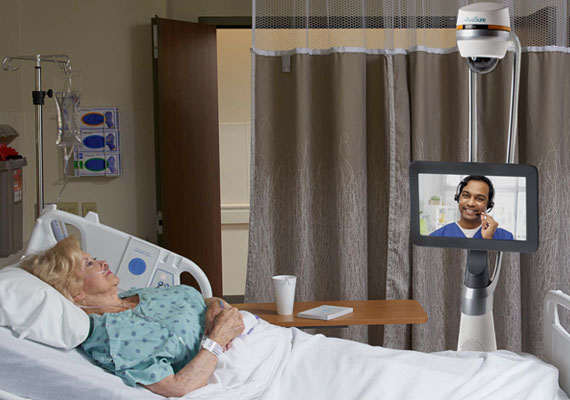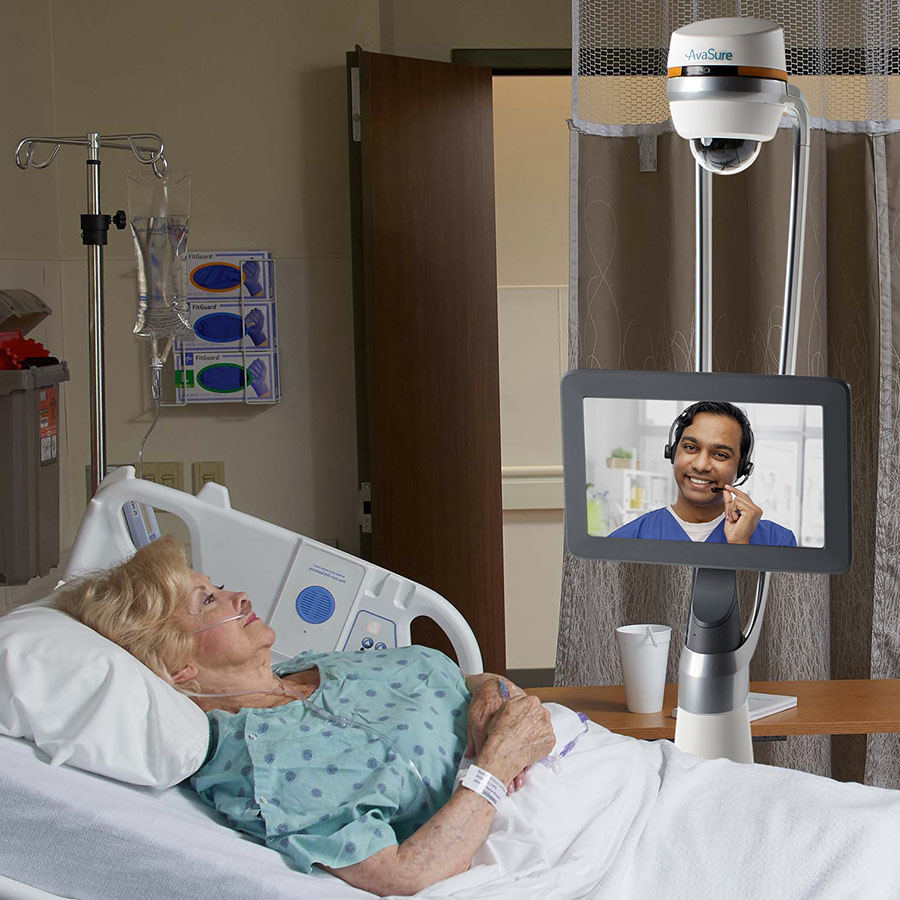Beyond TeleSitting: Virtual Nursing is Getting Real
Nurse Leadership
September 14, 2021
By Lisbeth Votruba, MSN, RN

A recent trip to UCHealth’s Virtual Health Center in Aurora, CO, gave me and a colleague a breathtaking view of AvaSure as an indispensable part of healthcare delivery. From a central observation facility, this multi-hospital system is keeping patients safe at the bedside, validating telemetry alarms and supporting ICU teams in delivering critical care. In the early stages of COVID, its Virtual Health Center collected and disseminated the latest evidence-based treatment options to frontline staff who barely had time to sleep, much less review clinical research.
We at AvaSure have been planning for these new use cases, but to see them in full flight was inspiring for me and my colleague, Crystal Harding. We could see some of the seams in what the system was doing, but it was real, bringing home the potential of AvaSure to support critical care nurses and technicians as they seek to improve quality, make the highest use of staff resources and take some of the feelings of isolation out of isolation care.
We have names for these new services, but what we are doing is essentially extending the same proven technology that for a decade has been preventing bedside disasters such as falls to provide new layers of virtual care.
Here is some of what we saw on our trip:
- The Virtual Health Center has three rooms. In one, five monitor techs were each watching a dozen med-surg patients for the “traditional” risks such as falling, eloping and pulling at lines and tubes. Staff were part of a research protocol on patient selection for remote monitoring. The room was mostly quiet while I was there, though I did witness an intervention to stop a traumatic brain injury patient from trying to go to the bathroom without staff help.
- The telemetry room was quite a contrast. It was monitoring 500 patients from multiple workstations. Audible alarms were a constant. As I walked through the room, I imagined the staff hearing those alarms in their sleep.
- The front room is the Virtual ICU, where three critical care nurses were using our technology, known as Verify, to watch over patients in all of this system’s hospitals. During night shifts, when physicians at the hospitals may not be as readily accessible, an intensivist physician joins the expert nurses in monitoring care. Verify uses AvaSure’s technology, but instead of a dozen patient rooms on screen, there are 38. Using a variety of physiologic monitors, the team can respond to the most at-risk patients based on bedside nurses’ concern or electronic trigger tools such as sepsis alerts and early warning scores, as well as visually rounding on the ICU patients.
- Sepsis is a great example of the success of this approach. The health system has implemented a state-of-the-art sepsis care bundle. Changes in lactic acid levels, blood pressure and heart rate trigger an intervention, as sepsis treatment is so time sensitive. I was told of a novice nurse in one of the system’s smaller facilities who was not administering antibiotics in a timely manner to a patient in danger of slipping into septic shock. The patient had pulled out the IV and the new nurse had not been able to re-insert it. The virtual nurse found the resource needed to get the IV back in and antibiotics delivered quickly.
- One of the nurses told me a story of how she witnessed a patient being coded for full cardiac arrest. She noticed that no one in the room was recording the medications given, so she took on the role of virtual recorder. There is an Advanced Cardiac Life Support algorithm that should be followed during a code. She was able to help make sure the team stayed on track. She told me: “I called into the room and reminded everyone, ‘It’s been two minutes since we last gave epinephrine; let’s give another dose now.’”
My colleague and I left our visit so inspired by the work this UCHealth is doing to keep patients safe. When the nurse told me this story, I had a lightbulb moment. While our TeleSitter® application helps keep patients physically safe, Verify is a wonderful tool for clinical safety.
All of this reminded me of a conference presentation I attended pre-COVID about virtual ICUs and the need for faster responses to “triggers,” or changes in physiologic conditions that are most closely tied to the danger of a life-threatening event. The presenters discussed how a bedside nurse has to open the electronic health record to receive one of these triggers, which might not happen if the nurse is occupied talking to a patient’s family or changing a dressing. With a virtual care team in place, the trigger generates an instant response.
The broader role we have envisioned for AvaSure is being actualized on the frontlines of care. We developed the tools, but nurses, doctors and monitoring staff are inspiring us by using them to improve the quality as well as the safety of care.
Ready to get started?
Get in touch with an AvaSure representative to learn more about AvaSure's AI-enabled virtual care solutions.
